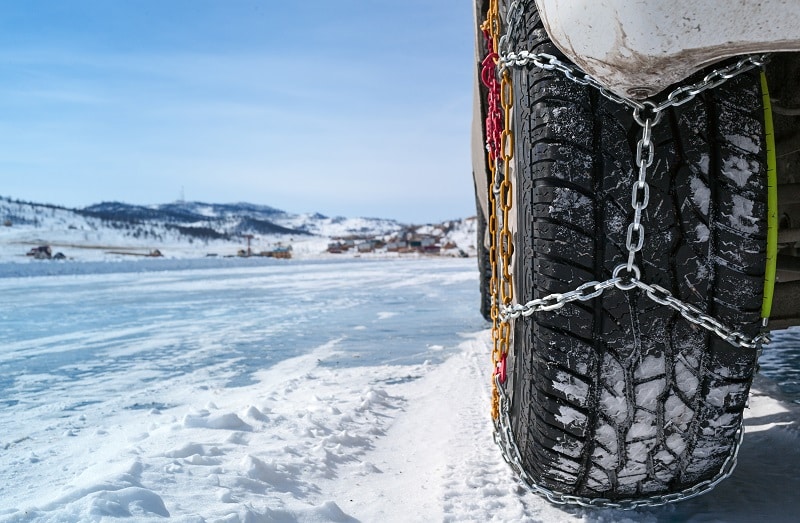
RV Tire Chains
The best strategy for driving on a frozen road with an RV is to avoid it altogether and drive south before the winter weather hits. However, there are times when you may need to cross a snow-topped mountain or an icy plain.
Snow Chains
Snow chains are placed around the tires for increased traction when driving over snow or icy roads. Furthermore, states that often experience snow will mandate the use of tire chains when the roads are covered in snow or ice. In fact, certain states may mandate that you must carry chains, even when you don’t need to use them.
On front-wheel-drive vehicles, chains are installed on the two front two tires, and on rear-wheel-drive vehicles, chains are installed on the two rear tires. Most motorhomes are rear-wheel drive; you can also buy special sets of chains designed for rear dually tires.
Chains come in both a heavy chain and also a cable-style. The cable style chains may be more practical for an RV since they are more compact to store, and lighter in weight.
To correctly put on your chains and prevent them from breaking loose, make sure they’re tight, drive a short distance, and re-tighten them. Loose snow chains can easily break and cause a lot of damage to your vehicle.
Once you’re off the snowy or icy road, remove the chains as soon as you can; driving on a dry road with chains will not only wear the chains out, chains can also cause your vehicle to slide when braking on a dry road.
Snow Socks
A relatively new alternative to snow chains are snow socks; these are made out of tough fabric with a high traction rating. Snow socks are faster and easier to put compared to tire chains. They’re also very lightweight, and easy to store. Snow socks look like a tire cover and are put on in a similar way.
Auto Socks are manufactured in Norway and are the only alternative to snow chains approved in all 50 states. One downside, you must remove the snow socks as soon as you get onto a dry roadway; driving anywhere but on snow or ice can damage them.
Driving in Snow and Ice
No matter if you’re using snow chains, snow socks or nothing at all, you must drive slowly whenever there is snow or ice. The recommended driving speeds for either chains or snow socks are up to 30 mph for cars and 20 mph for commercial vehicles; a motorhome or a truck towing a trailer would fall under the commercial vehicle designation. Likewise, leave plenty of room between you and the vehicle in front of you.
Related Video:
